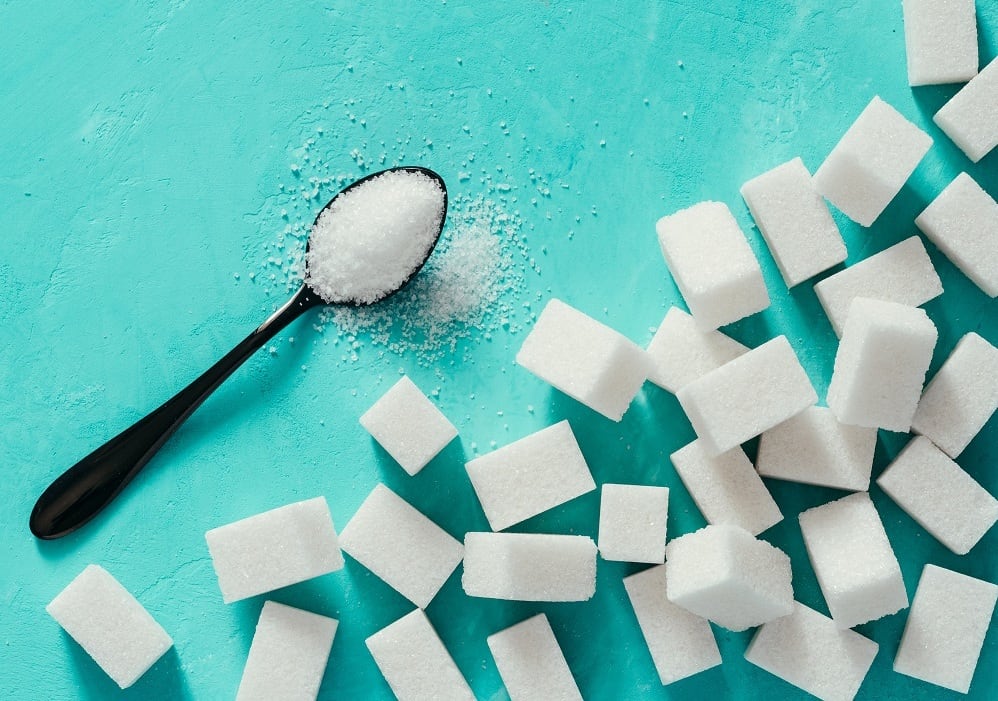Days after the second phase of a sugar tax was implemented in the UAE and Saudi Arabia, and 30 months after the price of some beverages doubled overnight when the first phase was brought in, residents of the Emirates remain sanguine about being forced to stump up more money for a can.
According to a YouGov Omnibus survey of 1,002 people in the UAE between in the week up to October 30 — a month before the start phase two began on December 1 — 55% of respondents voiced their support of the new sugar tax, with just 20% opposed to it.
Amazingly, of the levy’s supporters, more than three quarters also agreed with the idea of a complete ban on the sale of high sugar drinks in the country.
While a majority said the increased prices would change their behaviour by either reducing (41%) or stopping (13%) their sugary drinks fixes, close to half still expected their intake to remain unaffected.
At the same time, around two thirds each believed the levy would help reduce the nation’s intake of unhealthy beverages, kick sugar addiction to the curb and prevent chronic diseases like diabetes.
Sugar and tobacco
As is so often the case in the absolute states of the Gulf when governments make a decree, there has been little outcry, even at a time when the nations of the Gulf Co-operation Council, the regional trade and harmonisation bloc, have been looking for new sources of taxation.
After the GCC’s six member states decided in 2017 they would implement VAT and excise taxes on certain categories, including sugar and tobacco, the UAE and Saudi Arabia did so shortly afterwards. Bahrain followed later that year while Oman and Qatar waited until this January. Kuwait will hold off until 2020.
Unlike other countries that profess the virtues of implementing a sugar on public health, these Gulf countries have only really paid lip-service to this.
The development of tax systems in the GCC have been largely been shaped by the role oil revenues have played in raising money for government budgets. These have allowed governments to modulate their tax policies in favour of attracting investment and expat labour.
But with Gulf countries facing dwindling revenues from cheap oil at the time, the GCC made the decision to introduce VAT and excise taxes on the recommendation of the IMF. Their priority from the taxation of soft drinks also had a more fiscal framing than in most other countries.
At 5%, the VAT rate is the world’s lowest structure, but excise taxes were also brought in at 100% for tobacco and energy drinks and 50% for carbonated beverages, initially.
As all carbonated soft drinks, including diet sodas, came under the new excise regime, there has been little incentive for manufacturers to market healthier variants, adding fuel to the argument that the levy’s priority is monetary.
On December 1 this year, the 50% duty on carbonated beverages was extended to all drinks containing sugar or sweeteners, with the exception of sugary dairy drinks with at least 75% milk, and beverages that do not contain added sugar but are naturally sweet, like fruit juice and drinks for special medical purposes.
Cola decline
In the first year since the first phase of the tax was introduced in the UAE, Euromonitor found that low-calorie colas and sports drinks were more price sensitive than regular colas and energy drinks. In terms of sales volumes, regular colas saw the biggest decline.
Needless to say, the price difference for energy drinks in particular was stark in the eyes of the consumer. A can of Red Bull went from Dh7 (US$1.91) to Dh14 overnight. As a result, the market saw many consumers change over from global brands to more economical ones that sold for the equivalent of pre-taxes price.
Looking at Saudi Arabia, which was the first country in the Middle East to impose a sin tax in 2017, shortly ahead of the UAE, ratings agency Fitch surmised earlier this year “the Saudi government are the clear winners following a significant boost to excise tax revenues”.
Prior to the implementation of the duty, officials at the Saudi General Authority of Zakat and Tax, the excise enforcer, had expected to make SAR7bn (US$1.9bn) in revenue, within its first six months, to the end of 2017.
It appears to have surpassed this target, after tax revenue from goods and services rose from SAR30bn in 2016 to SAR39bn that year.
Fitch estimated spending on carbonated drinks to have contracted by 5.1% year on year in 2017, with the total sales of carbonated drinks reaching SAR2.3bn in 2017, down from SAR2.4bn in 2016, with growth expected to continue seeing mild stagnation.
“Over the medium-term to 2023, we continue to hold a muted outlook for carbonated drink sales, with a tepid growth average per annum of 1.6% projected between 2019 and 2023,” it said in an assessment of the sugar tax.
In terms of impact on consumer spending habits, the ratings agency has noted that its annual average growth rate of 1.6% between 2019 and 2023 is only slightly lower than the 1.7% rate recorded between 2014 and 2018.
Absorbing the tax hike
This less than dramatic change in fortunes might appear surprising, given the severity of the sugar tax, but two factors play in the favour of beverage companies in Saudi.
The first concerns pricing. Though Saudi is the fifth-biggest consumer of calories from sugar-sweetened beverages globally, its per-capita spend on the category is low by regional standards.
Its consumers spend the least on carbonated drinks in the Middle East at US$19 per year in 2019 compared to US%110 and US%40 in the UAE and Bahrain respectively.
This is due to the fact that prices in Saudi are lower than most other GCC countries, and therefore a sizeable levy is still easier to withstand.
The second advantage comes from the high income levels of consumers in Saudi enjoy, which enable them to absorb the tax hike.
“In 2019, for example, 42.9% of Saudi households are estimated to have a household disposable income of USD25,000+, this figure is projected to expand to 48.8% in 2023,” according to Fitch.
“Moreover, the fact that fiscal revenues have risen since the tax was introduced suggests consumer spending on carbonates has proved to be fairly resilient to the tax.”
It is not possible yet, however, to assess the impact of the sugar tax on public health in a country where over 35% of adults are considered obese and 17.7% are diabetic.
UAE: energy drink consumption decreases
In the UAE, Euromonitor has assessed that energy drinks sales had dropped by 65% after 15 months of the sin tax’s introduction, though this has likely only impacted the lower end of the income scale.
“We’ve seen massive reductions in the consumption [of energy drinks],” James George, a consultant at Euromonitor specialising in the drinks market, told Gulf News.
The huge price increase drove many people to give up energy drinks entirely, according to George, offering them an “incentive to stop”.
The researcher also estimates that the market’s value will decline by a further 39% in absolute terms between 2018 and 2023, from US$356m this year to US$224m in 2023.
The Middle East arm of the Global Retail Alliance paints a similarly gloomy picture for the wider beverage market as the second phase of the UAE sugar tax takes hold.
“Due to a shift in purchasing behaviours, we predict consumption volumes to decrease by as much as 50% for premium brands and 30% for cheaper mainstream brands,” it wrote recently.
“Even under positive market conditions, it will take at least three years to build back the volumes sold to the levels before the tax hit. Therefore, it is vital for companies to now map out a strategy to mitigate the short-term negative financial impact and to fuel future growth in the new, uncertain market environment in the long run.”
While the majority of UAE residents cheer the new tax, brands can do little more than manage its effect. Experts recommend they take it as an opportunity to look at their price-pack architecture and negotiate new trade-term structures with their distributors, perhaps with the offer of new performance-based incentives.
For many years they have enjoyed spectacular returns in the Gulf’s thirsty and famously sweet-toothed markets. Now these markets have just got more difficult.




